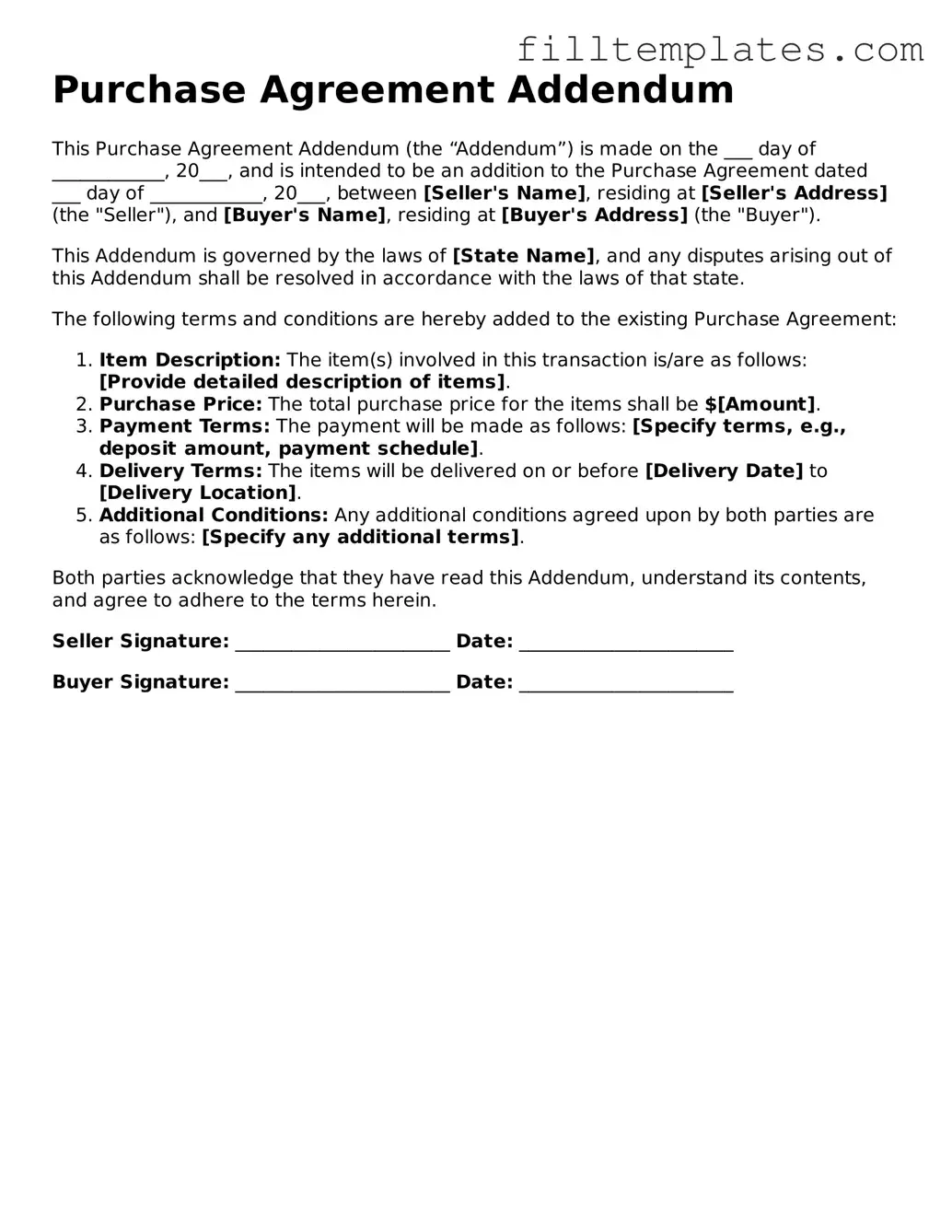Purchase Agreement Addendum
This Purchase Agreement Addendum (the “Addendum”) is made on the ___ day of ____________, 20___, and is intended to be an addition to the Purchase Agreement dated ___ day of ____________, 20___, between [Seller's Name], residing at [Seller's Address] (the "Seller"), and [Buyer's Name], residing at [Buyer's Address] (the "Buyer").
This Addendum is governed by the laws of [State Name], and any disputes arising out of this Addendum shall be resolved in accordance with the laws of that state.
The following terms and conditions are hereby added to the existing Purchase Agreement:
- Item Description: The item(s) involved in this transaction is/are as follows: [Provide detailed description of items].
- Purchase Price: The total purchase price for the items shall be $[Amount].
- Payment Terms: The payment will be made as follows: [Specify terms, e.g., deposit amount, payment schedule].
- Delivery Terms: The items will be delivered on or before [Delivery Date] to [Delivery Location].
- Additional Conditions: Any additional conditions agreed upon by both parties are as follows: [Specify any additional terms].
Both parties acknowledge that they have read this Addendum, understand its contents, and agree to adhere to the terms herein.
Seller Signature: _______________________ Date: _______________________
Buyer Signature: _______________________ Date: _______________________
